George and Barbara Olympios Family Endowed Graduate Research Fellowship
The George and Barbara Olympios Family Endowed Graduate Research Fellowship supports all costs related to graduate student travel to Greece for research purposes, primarily during the summer. For information about this fellowship, contact hellenic@humnet.ucla.edu
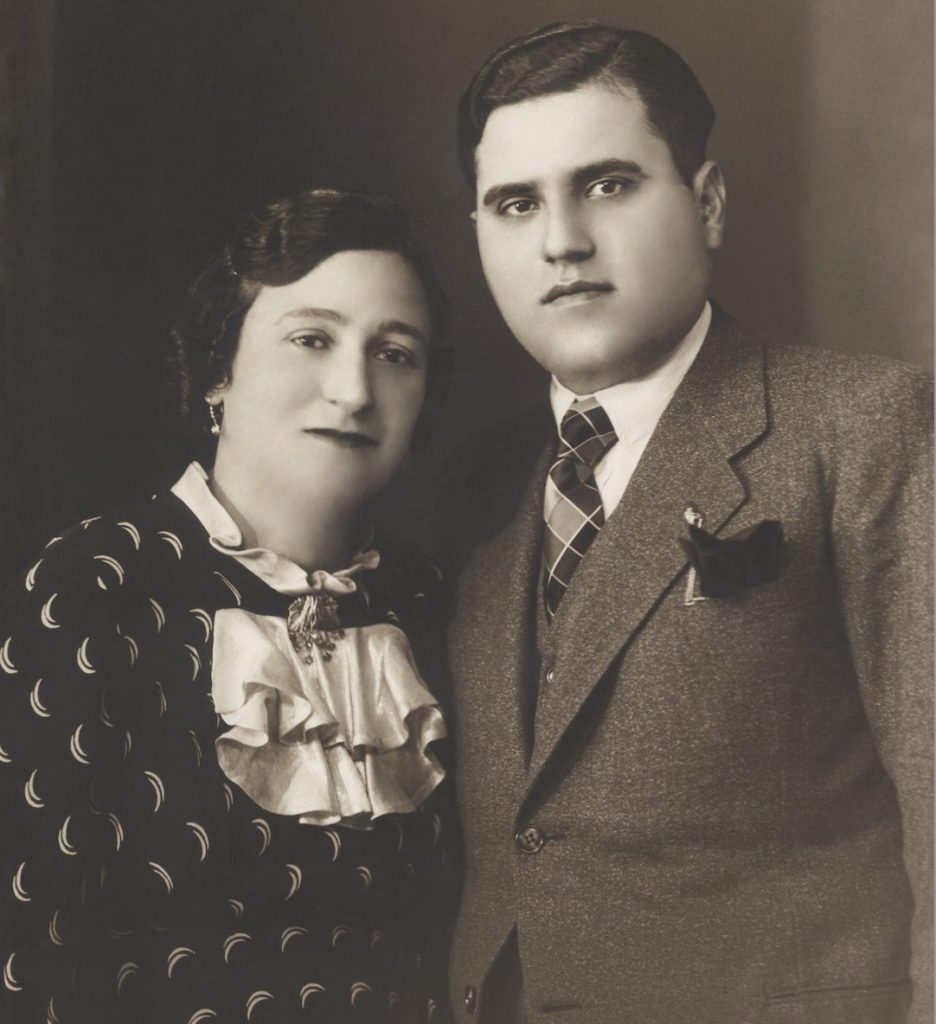
George Olympios (1907-1984) was born in the small village of Palaiohorion, Parnassidos, near Gravia. He attended technical college to study Marine Engineering and subsequently joined Greece’s Royal Navy to become a merchant marine. When Germany invaded Greece during World War II, Mr. Olympios was drafted into the Greek Navy. Throughout the War, the family struggled to survive. Barbara Olympios believed that her faith contributed to the family’s survival. After the war, Mr. Olympios returned to the Merchant Marines as Chief Engineer, which proved to be quite lucrative. For four years, he traveled between the United States, Japan, and Germany. Throughout his career, he worked for major shipowners including Stavros Livanos, father-in-law to both Aristotle Onassis and Stavros Niarchos. Married to his wife his entire life, Mr. and Mrs. Olympios had two children: Stavros and a daughter who died in 2018. In 1984, George Olympios died of a heart attack in his beloved home in Palaio Faliro, Athens, which was close to the sea from which he had made a living for more than 30 years.
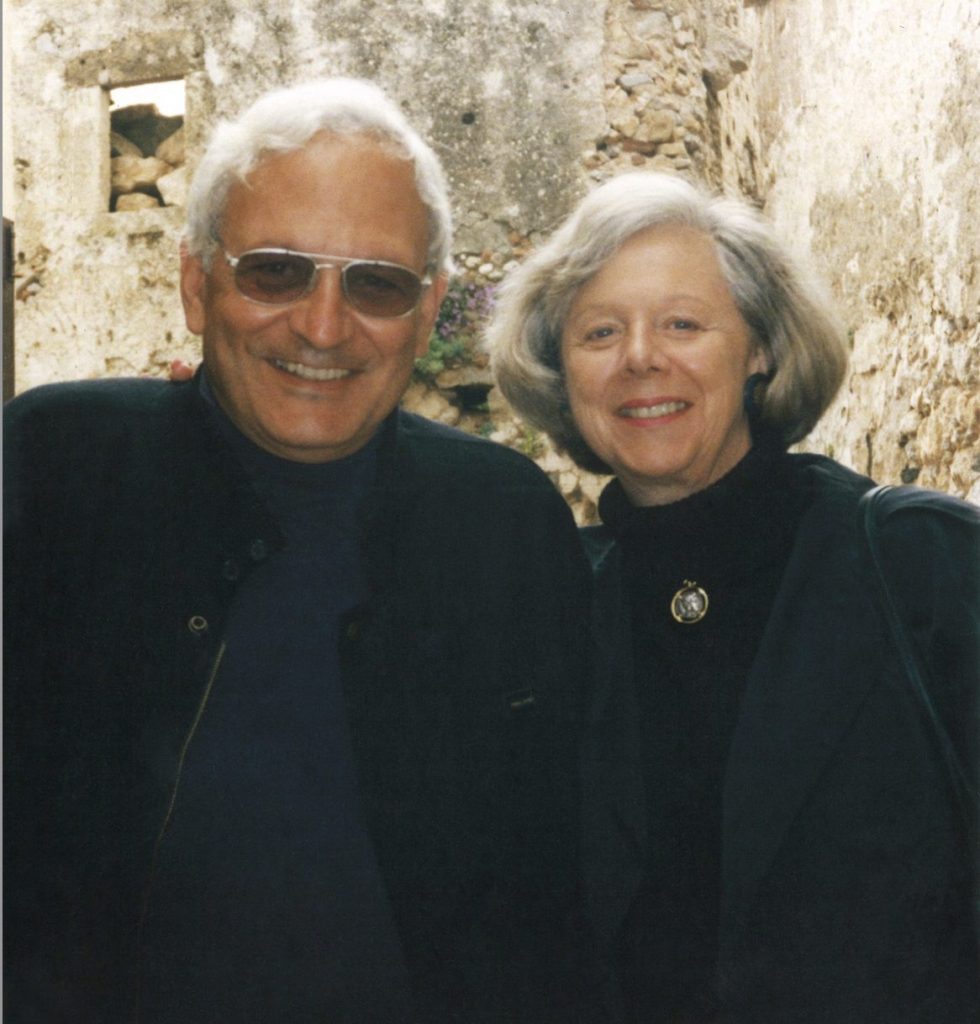 Stavros Olympios was born in Piraeus, Greece in 1937. He received his BSc degree in Mechanical Engineering with Honors from the University of Strathclyde in Glasgow, Scotland, and his MSc degree in Thermodynamics and Gas Dynamics from the University of Birmingham, England. Mr. Olympios attended a one-year program at the NATO Postgraduate School in Experimental Aerodynamics, representing Greece at the von Karman Institute for Fluid Dynamics. After graduation, he pursued research in the area of propulsion funded by the United States Air Force and the European Office of Aerospace Research. Unfortunately, he had to interrupt his project and return to Greece for his national service. After basic training, he was selected to attend officers’ schools in Patras and graduated first in his class as a second lieutenant. During his service, he worked with the Greek Air Force to develop Aerodynamic Facilities in Greece. Upon completing his service, he married Anne-Marie, his neighbor in Brussels whom he met in London Victoria Station after graduating from the University of Birmingham. After two years of service, the couple left for Dayton, Ohio, where he accepted a position at Wright Patterson Air Force Base at the Aerospace Research Lab to continue his earlier research before he left to join the army. After two years, they settled in Los Angeles, where his aerospace career included positions at Hughes Helicopters (Apache Helicopter) and Northrop Grumman, from which he eventually retired. While at Hughes Helicopters, Mr. Olympios obtained an MBA so that upon retirement, he could continue a second career in financial planning.
Stavros Olympios was born in Piraeus, Greece in 1937. He received his BSc degree in Mechanical Engineering with Honors from the University of Strathclyde in Glasgow, Scotland, and his MSc degree in Thermodynamics and Gas Dynamics from the University of Birmingham, England. Mr. Olympios attended a one-year program at the NATO Postgraduate School in Experimental Aerodynamics, representing Greece at the von Karman Institute for Fluid Dynamics. After graduation, he pursued research in the area of propulsion funded by the United States Air Force and the European Office of Aerospace Research. Unfortunately, he had to interrupt his project and return to Greece for his national service. After basic training, he was selected to attend officers’ schools in Patras and graduated first in his class as a second lieutenant. During his service, he worked with the Greek Air Force to develop Aerodynamic Facilities in Greece. Upon completing his service, he married Anne-Marie, his neighbor in Brussels whom he met in London Victoria Station after graduating from the University of Birmingham. After two years of service, the couple left for Dayton, Ohio, where he accepted a position at Wright Patterson Air Force Base at the Aerospace Research Lab to continue his earlier research before he left to join the army. After two years, they settled in Los Angeles, where his aerospace career included positions at Hughes Helicopters (Apache Helicopter) and Northrop Grumman, from which he eventually retired. While at Hughes Helicopters, Mr. Olympios obtained an MBA so that upon retirement, he could continue a second career in financial planning.
2024-2025

Luis Rodriguez-Perez, Graduate Student, UCLA Cotsen Institute of Archaeology
“I am currently in the beginning stages of my prospectus preparation. I will be researching Roman architecture in Athens during the Late Republican and Early Imperial Period (100 BC – 100 AD). During the summer of 2025 I will be returning to the Athenian Agora to continue my work as a photogrammetrist and digital specialist, preparing textured 3D models, excavation plan, and feature drawings. After the Agora Excavations, I have applied to participate in the excavations at Delos, a well-preserved urban city which had an enormous impact on the art and architectural landscape of Late Republican Rome. If I am not accepted to these excavations, I will continue my research from Athens, visiting the American School of Classical Studies’ Blegen and Gennadius Libraries to conduct my research, as well as cataloging extant architectural features in Athens. I will be using the funds primarily to finance my flight to and from Athens this summer, as well as my lodging during the period where I will be conducting independent research.”
2023-2024
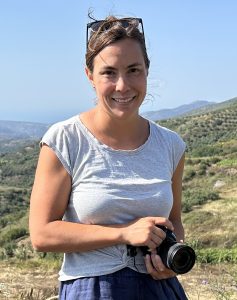
Nicolyna Enriquez is a Ph.D. Candidate in Byzantine Art History at UCLA studying under Professor Sharon Gerstel. Her dissertation, “Surrounded by Sea, Rooted in Land: An Environmental History of Late Byzantine Art on Crete,” brings together visual imagery, architectural studies, archaeological research, and topographical analysis to explore how rural Cretan villagers in late Byzantium experienced and interacted with their insular environment. With the George Olympios Family Endowed Graduate Research Fellowship, she will continue to conduct on-site analysis on Late Byzantine churches in the provinces of Selino and Pediada on the island of Crete. As part of her field research, she will walk along the pathways which connect these churches and settlements, mapping the routes and sites with the goal of gathering this information into a publishable Geographic Information System (GIS) data set.
Finally, as many of these churches are difficult to gain entry to or access, she will also use the Olympios Fellowship to continue to test a new technology for the study of churches in the field. Using a LiDAR sensor, she will create digital 3-D models of every church that she visits. Using an iPad (or VR Goggles), anyone, with a few simple hand gestures, can walk around, enter, and explore these churches from anywhere in the world. She is excited to continue building a database of these scans in order to bring these incredible churches to life for students of all ages.
2023-2024
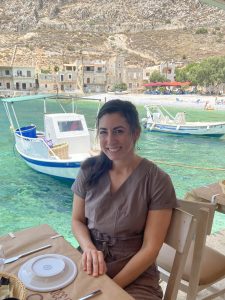
Christine Muron is a graduate student in the UCLA Department of Art History. The support provided by the George and Barbara Olympios Family Endowed Graduate Research Fellowship will allow her the opportunity to study the art and material culture of healing in various museums and sites in Greece. This research forms a segment of her dissertation that explores the relationship between religion and medicine in Byzantium, particularly how cures for the physical body were believed to be inextricably linked to the soul and how healing practices changed over time. First, she will investigate pharmaceutical vessels, instruments, and substances that are often rendered in Byzantine frescoes, vernacular manuscripts, and hagiographical texts. At the archaeological site of Ancient Corinth, for instance, she will analyze an assemblage of apothecary jars and glass vessels from a context dating to the 13 th -century Frankish occupation of the city. These containers not only shed light on the existence of an infirmary in an urban center, but they are also found illustrated alongside healing saints in rural Byzantine churches. Next, she will visit museum collections that are associated with the healing shrines of St. Nikon Metanoeite in Sparta and St. Demetrios in Thessaloniki. By studying other types of material culture like reliquaries and ampullae, she aims to understand how healing cults grow and spread beyond their respective shrines. The Fellowship will foster her multidisciplinary approach to museum and archaeological collections in Greece. Muron looks forward to demonstrating how the material culture of healing speaks to the exchange of therapeutic and pharmaceutical knowledge among pilgrims, merchants, and crusaders in Byzantium.
2022-2023
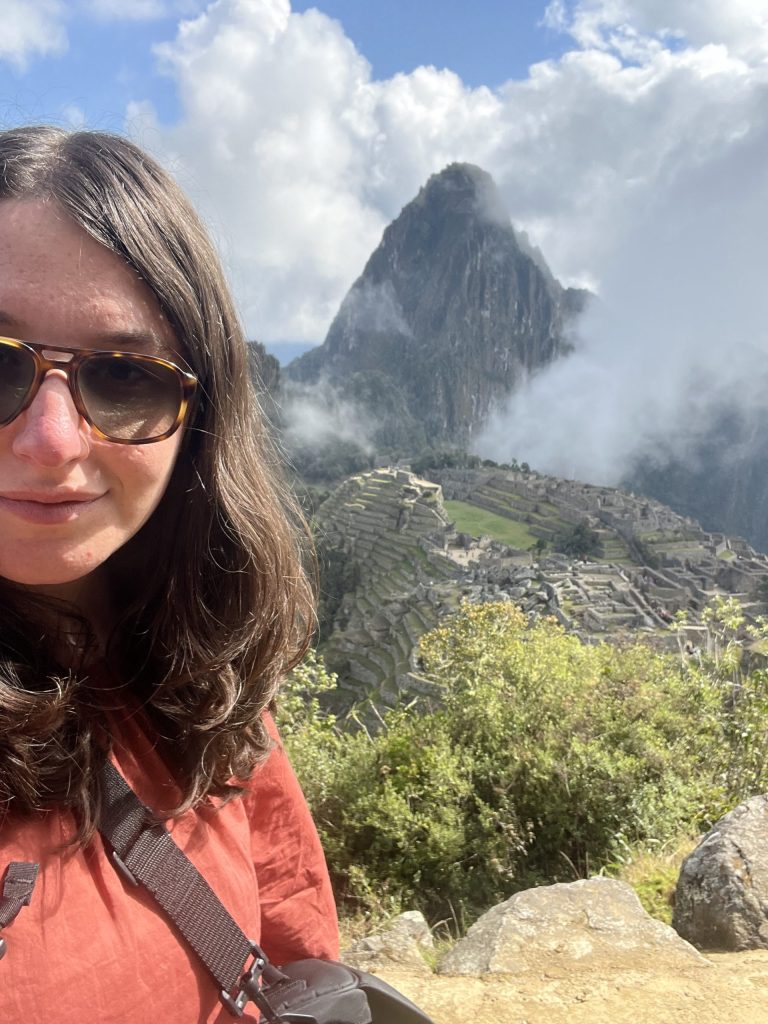
Rachel Schloss is a recipient of the George and Barbara Olympios Family Endowed Graduate Research Fellowship for 2023. With the support of the fellowship, Rachel will travel to Athens to participate in two programs run through the American School of Classical Studies at Athens (ASCSA) that will transform her archaeological research through training in advanced geoarchaeological techniques uniquely taught in Athens. First, she will participate in the intensive Micromorphology course at the Malcolm H. Wiener Laboratory for Archaeological Science at ACSCA, learning skills that will allow her to decipher the makeup of soil and uncover activity patterns in her dissertation site. Then, she will participate in the Wiener Laboratory’s Geoarchaeology and Site Formation Field School, which takes place through excavation at the Athenian Agora and teaches specialized skills for high-level PhD students. The Olympios Fellowship will provide the opportunity to learn and develop new archaeological research techniques that Rachel could not learn elsewhere, taught by experts on the cutting edge of developing and mobilizing geoarchaeological methods.
2021-2022
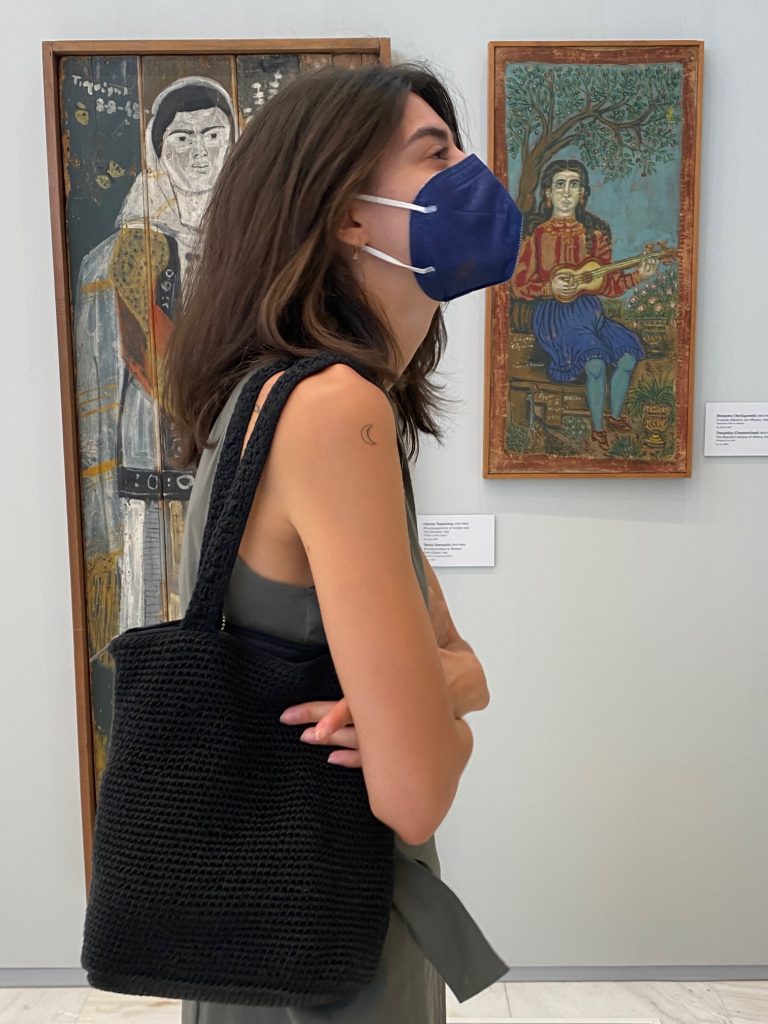
Sofia Pitouli is the recipient of the George Olympios Family Endowed Graduate Research Fellowship for 2022. The fellowship will enable Ms. Pitouli to conduct on-site and archival research to prepare an essay to be published in late 2022 on the modern Greek artist and writer Fotis Kontoglou (1895/6–1965). Kontoglou has been celebrated as the most-esteemed icon painter of the twentieth century who revived the Byzantine style in Greece. Her research takes a less studied route; it traces the Byzantine art revival in the United States. It considers how modern Byzantine aesthetics, reception, and deployment construct a transnational identity of Greekness through Kontoglou’s oeuvres in the United States. Kontoglou, who never traveled to the United States out of fear, either completed works in Athens or sent his students to numerous American cities to fulfill commissions. The study of his students’ artistic repertoire in the United States opens up avenues of research on the survival of “Kontoglou’s School” there and the continuation of the modern revivalist movement until today. Kontoglou’s work, and consequently that of his students, challenges us to examine the afterlife of Byzantine culture and its reception in the twentieth and twentieth-first centuries—centuries after the year 1453, the Byzantine Empire’s chronological end. Yet, it is the Byzantine past, awakened via Kontoglou’s works, and arguably that of his students, that spoke—and still speaks—to Greek migrants across the globe.
